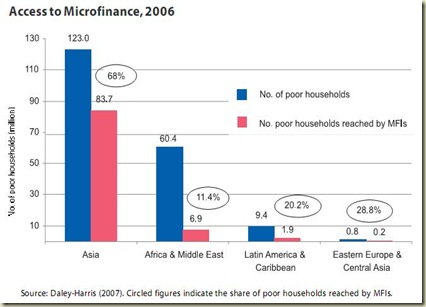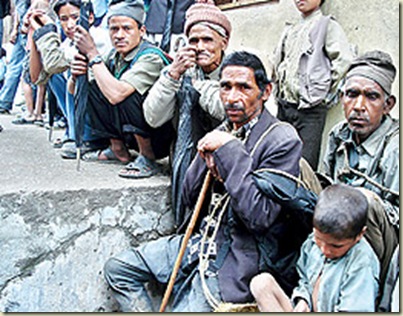Newspaper editorials are abuzz with anger and frustration against India and China for creating a gridlock, again, in the WTO talks, leading to collapse of the protracted Doha "development" round of trade talks. High on the agenda were the US and the EU farm subsidies and demand posed by the US to developing countries to open up their manufacturing/industrial sector for trade. It is understandable that the US wants the manufacturing to be as free as possible despite its intransigence attitude in reducing farm subsidies --note that the US automakers and manufacturing firms have been struggling to stay put in the market chiefly due to stiff competition from low priced and better fuel economy vehicles from Japan and South Korea. They could not compete in home, so now they want to compete in places where the economy cannot afford to invest in manufacturing plants now. Its like grabbing before anyone grabs it or develops a potential to grab it!
India raised last minute alarm by insisting on inclusion of a provision for it (and the G33) to raise tariff in sectors very vulnerable to international price fluctuation. Though the new condition was hugely unpopular among the West's negotiators, Indian chief negotiator and commerce minister, Kamal Nath, was also in a dilemma: domestic politics and international trade. He chose the first (remember, the Indians are going to polls in couple of months). He is being cheered in India now! The US, India, and China failed to agree a compromise on a proposal called the Special Safeguard Mechanism (SSMs), which was designed to protect farmers in the developing world against temporary surges in cut-price imports of cotton and rice...Kamal Nath claims that he had the backing of 100 developing countries. He was concerned about the livelihood of poor and subsistence farmers in India, where 70% of the population still depend on agriculture for living, rather than the inflated gains from trade and manufacturing sector deals.
Kamal Nath argues:
It is unfortunate in a development round, this is the last mile we couldn’t run because of an issue of livelihood security.
The Washington Post bemoans and argues that it will make the developing countries more poorer (what a ridiculous argument???)  :
:
...China's role in the demise of the Doha Round is particularly dismaying, considering China has reaped huge benefits from global trade in the seven years since it joined the organization -- with strong U.S. support. Chinese exports have quadrupled from $300 billion in 2002 to $1.2 trillion in 2007, thanks in large part to free access to the U.S. market. U.S. supporters of Chinese inclusion in the WTO argued that drawing China into a system of multilateral give-and-take would mute its nationalistic tendencies. Evidently, the Chinese see the matter differently. They, and the world, will be poorer because of it.
Similar, but a milder, tone from the NYT:
...A breakdown would certainly be harmful. And the world’s poorest countries would lose the most.
...If the world’s richest nations give in to the temptations of protectionism, the world’s poorest countries will suffer the most. But no one, including the rich nations, will escape the damage to the global economy
Did the collapse of this trade talks mean that we lost a whole lot in terms of tariff and welfare gain? Well, not really. The tariff loss would amount somewhere between $50 billion to $100 billion-- that is equal to or double the amount of foreign aid given to developing countries in a year. It is a very tiny fraction of world GDP (around 0.1%). Worse, the benefits of trade would have gone mainly to the West- not to the poor farmers in developing countries. Ironically, the Doha round is also termed as "development round" in the belief that a success in trade talks would help the poorest people the most. Also, the poor countries already have special access to the markets of the rich world, meaning that a general cut in tariff across the globe would either not affect them or they would lose (the latter one having higher probability of occurrence!)
Here is Rodrik's advice to not cry loud for Doha:
Actually, not much. There was not a whole lot at stake to begin with for poor nations as a whole. (Cotton is a somewhat big deal for West Africa, but pretty much everything else is a mixed bag.) And if the taxpayers and consumers of the U.S. and EU want to reap the considerable benefits of reducing farm supports, they can surely do that on their own without having to be bribed by increased market access abroad. So don't listen to trade officials and editorialists who will bemoan the huge downside risks.
The Economist says the collapse was expected (and it really was):
The failure of the Geneva talks will not send that into reverse. But with the world economy slowing, it is singularly ill-timed nonetheless. The best that can be said for the collapse of negotiations is that, after all the difficulties and acrimony that have plagued the Doha round for much of its seven-year life, few outside Geneva (and perhaps not many on the lake’s shore) expected a deal. But bad news, even when it is entirely predictable, is bad news all the same.
Bilateral and multilateral trade deals will be popular now (the Doha round is not dead yet...and it should not be!) because countries would be willing to go for free trade in a regional block where they face similar overhead costs and structural problems. For instance, India is really pushing forward for a free trade agreement in the SAARC region (known as SAFTA) and have already been allowing duty free entry of numerous goods into its market.
Here is an assessment from a recent study (The Promise and Perils of Agricultural Trade Liberalization: Lessons from Latin America) by the the Global Development and Environment Institute (GDAE) at Tufts University. It accentuates the need for SSMs:
The government’s responsibility is to provide the tools necessary to enable small farmers to take advantage of high global food prices to enter this virtuous cycle of development. Governments should retain the ability to use tariffs to protect small holder agriculture when global prices fall; focus poverty alleviation programs on rural areas; accumulate food stocks to cushion citizens from price fluctuations; and act as a guaranteed buyer to small farms in acquiring these stocks. Developing countries must navigate multilateral and bilateral trade negotiations in a way that allows them to retain the use of tariffs and safeguard measures.
Here is a nice summary of why the the talks stumbled.












